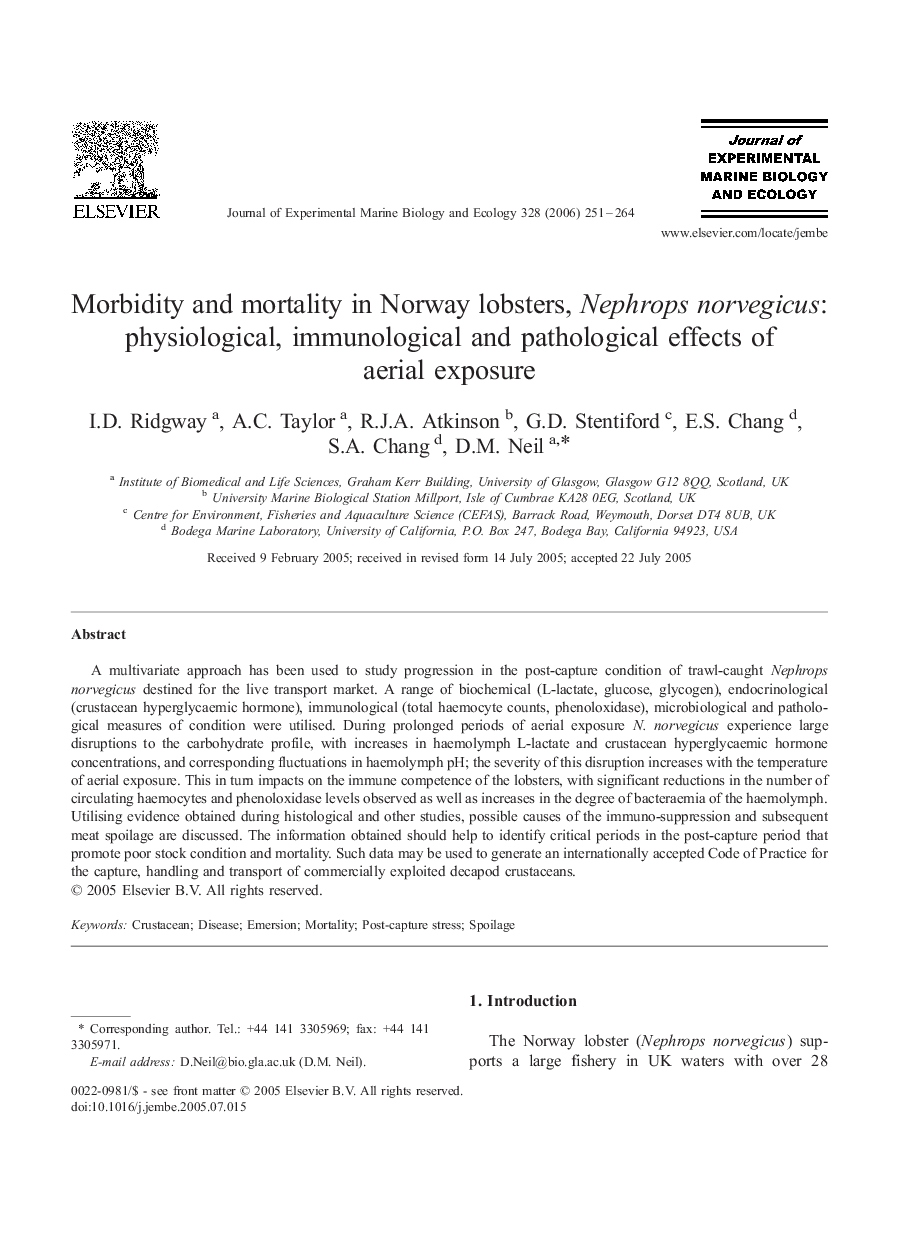| Article ID | Journal | Published Year | Pages | File Type |
|---|---|---|---|---|
| 4398281 | Journal of Experimental Marine Biology and Ecology | 2006 | 14 Pages |
Abstract
A multivariate approach has been used to study progression in the post-capture condition of trawl-caught Nephrops norvegicus destined for the live transport market. A range of biochemical (L-lactate, glucose, glycogen), endocrinological (crustacean hyperglycaemic hormone), immunological (total haemocyte counts, phenoloxidase), microbiological and pathological measures of condition were utilised. During prolonged periods of aerial exposure N. norvegicus experience large disruptions to the carbohydrate profile, with increases in haemolymph L-lactate and crustacean hyperglycaemic hormone concentrations, and corresponding fluctuations in haemolymph pH; the severity of this disruption increases with the temperature of aerial exposure. This in turn impacts on the immune competence of the lobsters, with significant reductions in the number of circulating haemocytes and phenoloxidase levels observed as well as increases in the degree of bacteraemia of the haemolymph. Utilising evidence obtained during histological and other studies, possible causes of the immuno-suppression and subsequent meat spoilage are discussed. The information obtained should help to identify critical periods in the post-capture period that promote poor stock condition and mortality. Such data may be used to generate an internationally accepted Code of Practice for the capture, handling and transport of commercially exploited decapod crustaceans.
Related Topics
Life Sciences
Agricultural and Biological Sciences
Aquatic Science
Authors
I.D. Ridgway, A.C. Taylor, R.J.A. Atkinson, G.D. Stentiford, E.S. Chang, S.A. Chang, D.M. Neil,
